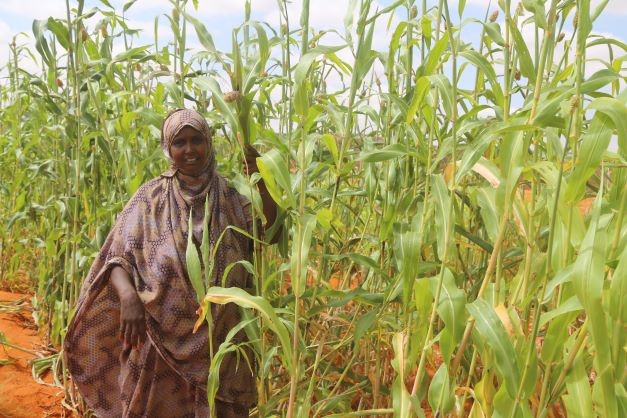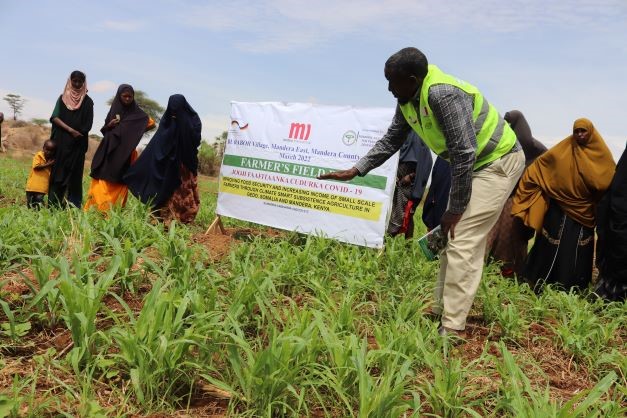The current drought in Northern Kenya is unprecedented in its scale and duration, leading to critical food insecurity and rising malnutrition rates among people in the 29 counties classified as ASAL communities. According to an October drought report by the ASAL Humanitarian Network, more than 4.2 million people are facing high levels of acute food insecurity with high rates of acute malnutrition among children, and pregnant and lactating women. With the region already facing a fifth consecutive failed rainy season, the situation is deteriorating rapidly, and some areas are at risk of famine. The lack of pasture and water for livestock has led to the death of over 1.5 million livestock including, cattle, camels, and shoats which are a significant livelihood, food security and nutrition sources of these communities. (UN OCHA).

Saadia Mohammed, a determined 35-year-old mother of four, ventured into farming five years ago. She initially leased multiple farms and grew food crops such as maize, which she harvested and sold for profit. She utilized traditional farming methods such as earthen irrigation canals on her leased farms with water supplied from the River Dawa. However, consecutive failed rainy seasons and infestations of the desert locusts and armyworms later forced her to limit her farming efforts to a small farm near her home in Bur Abor village, Mandera East Sub-County, Mandera County. The little that was harvested in recent years, Saadia reported that it was all consumed by her family.
Saadia Mohammed is one of 50 farmers who have been positively impacted by an agricultural livelihood development project implemented by Nomadic Assistance for Peace and Development (NAPAD) in partnership with Medico International (MI) and funded by the Federal Ministry for Economic Cooperation and Development (BMZ). The project aims to improve food security and increase income for small-scale farmers through the promotion of climate-smart subsistence agriculture.
The project established an irrigation water supply infrastructure which comprises a shallow well-constructed near the river, and the installation of a solar-powered water pumping system to pump water to an elevated water tank that stores 60,000L of water from the shallow well. The project has also laid pipework which has greatly improved the ease of water redistribution to the irrigated farm.
The project also provided the farmers with farm inputs and high-quality seeds who are now actively growing maize, fodder, sudan grass and sorghum, all of which have a ready market.

“When NAPAD started supporting us, the land was nothing more than a dry, rocky wasteland covered in shrubs and thorny vegetation,” Mama Saadia reminisced. “But with their help, we were able to clear more land, plough it, and plant crops. Now, it’s a thriving farm, and we couldn’t be more grateful.”
As an alternative to traditional farming practices by smallholder farmers, NAPAD continues to promote climate-smart agriculture, agroforestry, and integrated pest and disease management to the farmers. The project also organizes farmers’ field days that provide skill transfer and mentoring to farmers through agricultural extension services which have led to improved agricultural productivity.

“Before receiving training on climate-smart agriculture from NAPAD, my approach to farming was very simple,” Mama Saadia stated. “I would plant maize seeds, wait for the rain, weed my farm, and hope I would get a good harvest. But since NAPAD introduced us to irrigation farming, I try to incorporate what they teach us while farming to improve the farm yield.”
